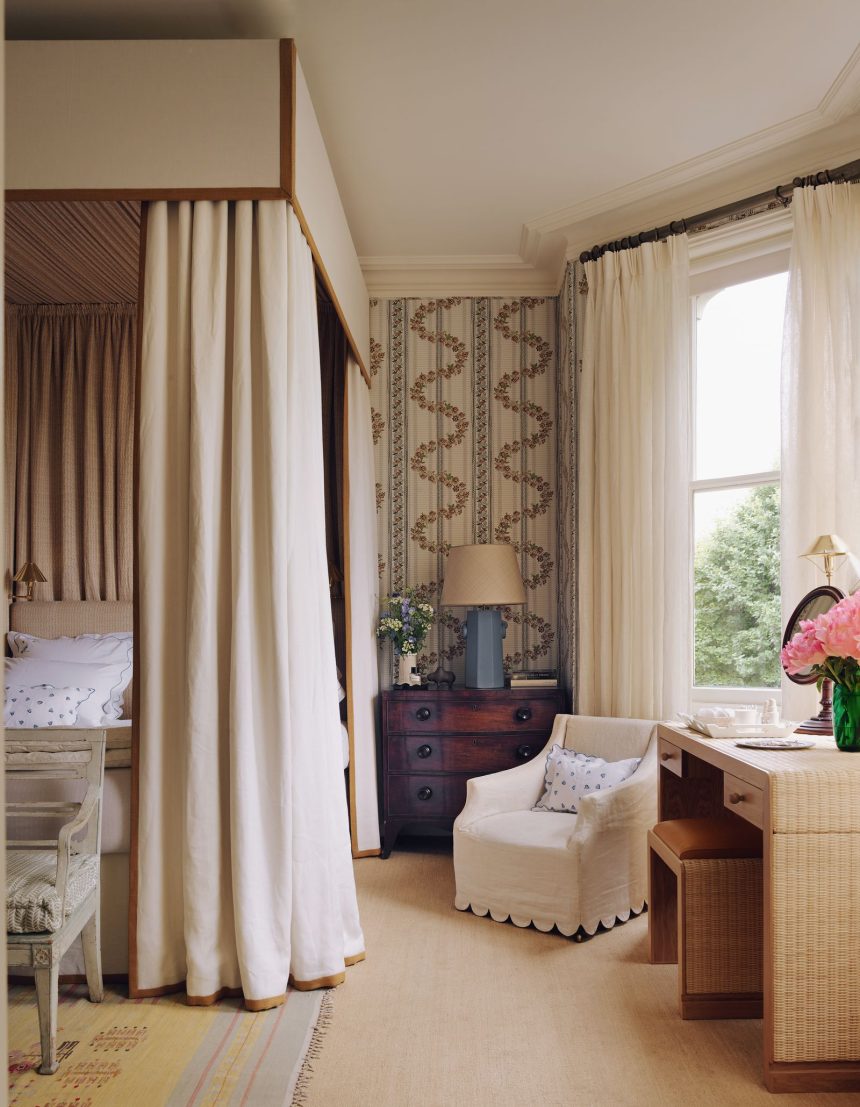So, could the kitchen table be pushed against a wall, or, replaced with one that is round or oval? The original might work as a desk or art table somewhere else – and in that vein, perhaps the armchair that nobody sits in could be relocated to somewhere it will be used? Regarding your bedroom, I know you’ve tried switching sides of the bed, but “I immediately moved my bed, which shifted my perspective,” recounts interior designer Olivia Outred, of the period after her ex left. This idea can be applied to other rooms, too – and with that, where art is hung. When you are sitting on the sofa, are you looking at the picture you most want to be seeing? The professionally advised approach would be to draw up scaled diagrams of your floor plan and play with cut-outs of the major pieces of furniture – but I know that when I’m so inspired, I tend to forge ahead, collecting ornaments and pictures together in one place, before starting again as if from scratch, creating new juxtapositions from old friends. The fresh view can be invigorating, and can “stop the nagging reminder that things went wrong, and all the guilt and horror that goes with that,” says Olivia, who advises combining the moving of stuff with “a dramatic and energetic clean. It helps to shift the air, to get rid of stale corners where arguments happened, or where hopes and dreams were squashed.” Don’t, at this point, worry whether the colours work, or about leaving holes in walls.
For the next step is the giving of that chair to charity, which I read as being more about aesthetics than goods dispersal (though it can be both). “I think the principal pleasure in having my own space after years of sharing with my husband was having the freedom to do whatever I want, with no negotiation, and it’s still something I enjoy years later whenever I get the urge to paint my sitting room pink,” says Virginia. This is the moment for that – and you can fill in those holes as you go.
Plus, a new wall colour might be the closest equivalent there is to the new haircut you asked for – though arguably, it’s safer. You have to wait for a newly peroxide sharp-bob-with-fringe to grow out; paint can simply be painted over. But change this significant (assuming you’re switching between, say, Farrow & Ball ‘Hague Blue’ and Farrow & Ball ‘Babouche’, rather than two similar shades of off-white) will, as you say, be noticed by your children – so here I’d like to introduce the idea that they might not view it as rejection of your ex-husband, but, rather, as inspiring. Olivia recalls, after her parents separated, “coming home from school to find my Mum painting garlands of flowers on the wall around her bed. This seemed like a metamorphosis to me.” My fellow agony aunt Philippa Perry, in The Book You Want Everyone You Love* To Read, advises choosing guilt over lingering resentment, “for you will discover your world does not fall apart”. You’ve retained your children’s home and school – so I think you can move on from colours your ex-husband chose, if you want to, and view them as the hang-ups of the final line of that verse. The children might decide to repaint their own bedrooms, alongside. And you could even, if you think you’d enjoy it, work with a colour consultant who will doubtlessly have interesting ideas you’d never have arrived at alone.








